Roborock Q7 M5 robot vacuum review: a brilliant budget bot with bouncy suspension
Why you can trust TechRadar
We spend hours testing every product or service we review, so you can be sure you’re buying the best. Find out more about how we test.
Roborock Q7 M5: two-minute review
Product info
There are a few different M5 options – the robot is the same, but the dock is different:
Q7 M5: Charge-only dock
Q7 M5+: Auto-empty dock
Q7 M5 Max+: Auto empty and water refill dock
For this review, I tested the Q7 M5, with the charge-only dock.
The Roborock Q7 M5 is a relatively basic option from within the Roborock robot vacuum lineup, aimed at the more budget-conscious consumer. Despite the affordable pricing, it’s still a capable bot, offering the kind of suction specs I’d expect from a much pricier model.
The design may lack the bells and whistles (and robotic arms) of the brand’s newest offerings, but it’s still effective in use. As well as sporting a robust build, it has a generously sized dust cup and water tank and bouncy suspension that enables it to clear relatively tall room thresholds with confidence. Navigation is also reliable and mapping accurate.
In my vacuuming tests, the Q7 M5 proved up to the task of clearing up debris, large and small, and sucked up an impressive volume of dog hair from my carpets, too. It did struggle a little with getting right into the edges of rooms, however – more advanced robot vacuums typically have a side brush that can extend outwards, whereas the one on the Q7 M5 is fixed.
The mop setup is rather basic, although the bot still managed to clean up a dried ketchup smear surprisingly effectively. Overall I felt mopping was rather wetter than expected, so it perhaps isn’t the best choice if you have delicate wooden floors, for example. The Q7 M5 also lacks the capacity to lift its mop when traversing carpet (not surprising at this price point, though).
The model I tested comes with a compact, charge-only dock, and is perfect for those with small homes, or if you want a cleaner for a less-used floor of a multi-storey home. However, owners of larger homes and/or pets should seek out the “Plus” model where possible; it arrives with an auto-empty dock, which will save you from having to empty the onboard bin too frequently.
That’s the short version; read on for my full Roborock Q7 M5 review.
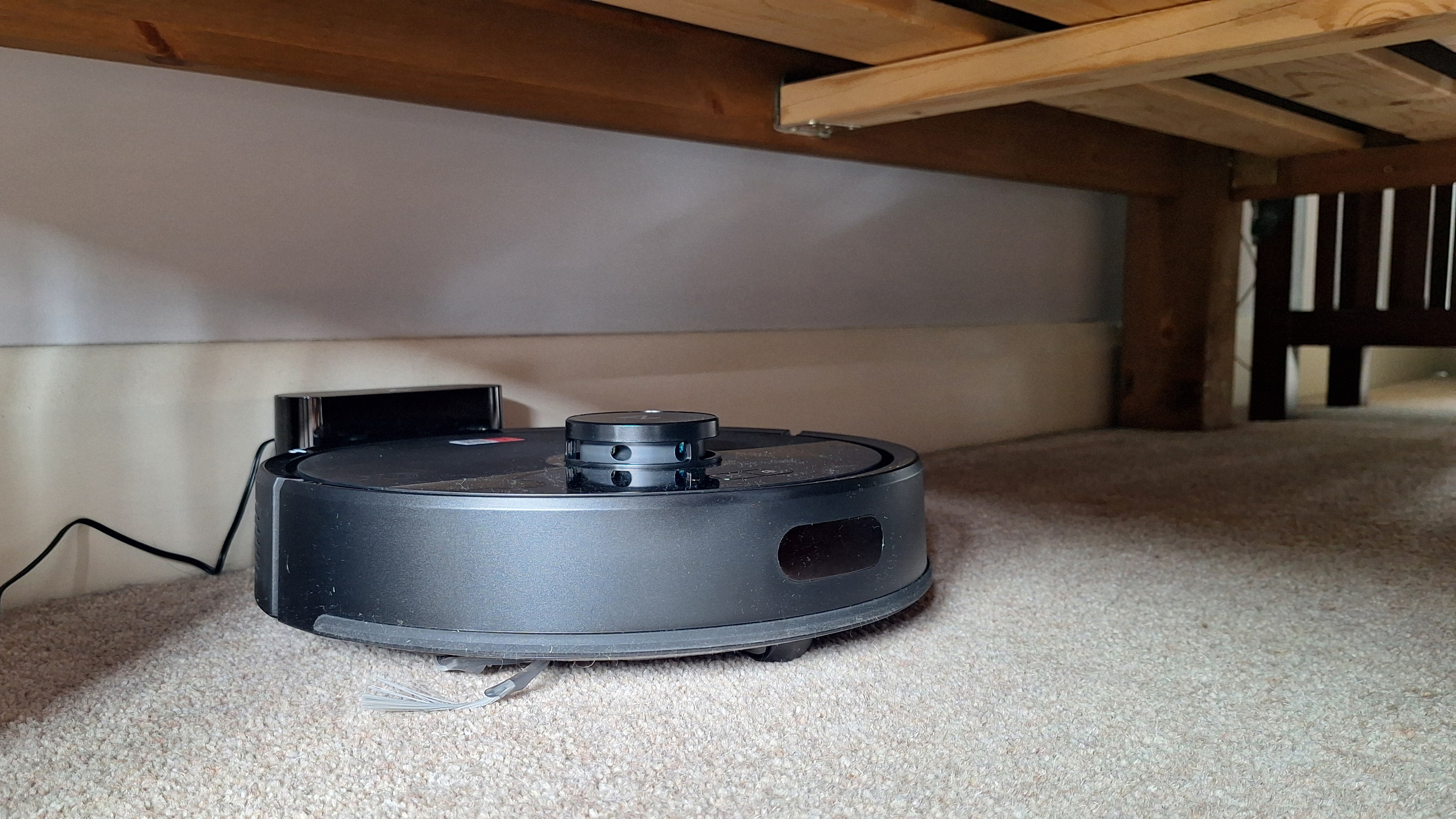
Roborock Q7 M5 review: price & availability
- List price: $299.99 / £239.99
- Launched: April 2025
- Available: US and UK (AU alternatives available)
The Roborock Q7 M5 launched in April 2025, as an upgraded version of the previous Q7 Max. The brand has plenty of fancier, pricier bots (see the arm-equipped Saros Z70, for example) in its lineup, but the Q7 M5 is designed to appeal to a more budget-conscious consumer.
In the US, the Q7 M5 costs $299.99 direct from Roborock, but was discounted to £239.99 at time of writing. In the UK, the list price when purchased direct from Roborock is £239.99, but at time of writing it was reduced to £179.99. Even at full price, it falls into the budget bracket.
Having tested a few budget bots now, I’d say that even at full price this vacuum offers decent value for the features and performance it delivers, with the discounted prices making it more appealing still. My current favorite robot vacuum around this price level is the Dreame D9 Max Gen 2, which costs $299.99 / £219 at full price. However, the Roborock offers stronger suction specs and slightly more advanced mopping – in that you can switch off that functionality without having to remove the mop pad.
Upgrading to the Q7 M5+ with the auto-empty dock pushes the price up to $429.99, while the Q7 M5 Max+ – with a dock that not only empties dust but also refills the water tanks – is $599.99. Those upgraded options don’t appear to be available in the UK, though. In both cases, the list prices are on the high side for what you’re getting – although, at time of writing, both models were already available at generous discounts, bringing them more in line with the price I’d expect to pay.
The Q7 M5 doesn’t seem to be available in Australia, but there is a Roborock Q7B for AU$399, which looks very similar but has slightly less suction. There’s also a Q7T Plus for AU$799, which looks the same as the Q7 M5+ with its auto-empty dock.
- Value for money score: 4 out of 5
Roborock Q7 M5 specs
|
Max suction: |
10,000Pa |
|
Robot diameter: |
12.8in / 35.3cm |
|
Robot height: |
3.9in / 9.9cm |
|
Dock dimensions (W x D x H): |
6.3 x 4 x 2.8in / 16 x 7 x 10.1cm |
|
Dust bin volume (onboard): |
Requested |
|
Water tank volume: |
Requested |
|
Base type: |
Charge only (more advanced docks available) |
Roborock Q7 M5 review: design
- Robovac with raised LiDAR puck, chunky wheels and charge-only dock
- Fixed, D-shaped, removable mop
- Dust cup and water tank form one removable unit at side of bot
The Roborock Q7 M5 looks similar to other budget-friendly robot vacuums –except, perhaps, a little more robust. A chunky bumper encircles the perimeter, and there’s a raised LiDAR turret for navigation (newer Roborock models such as the Saros 10R have done away with this, in favor of a different navigation method, thus offering a lower overall profile). The top surface is a mix of matte and very shiny black plastic, the latter of which attracts much dust – perhaps not the best choice for this type of gadget.
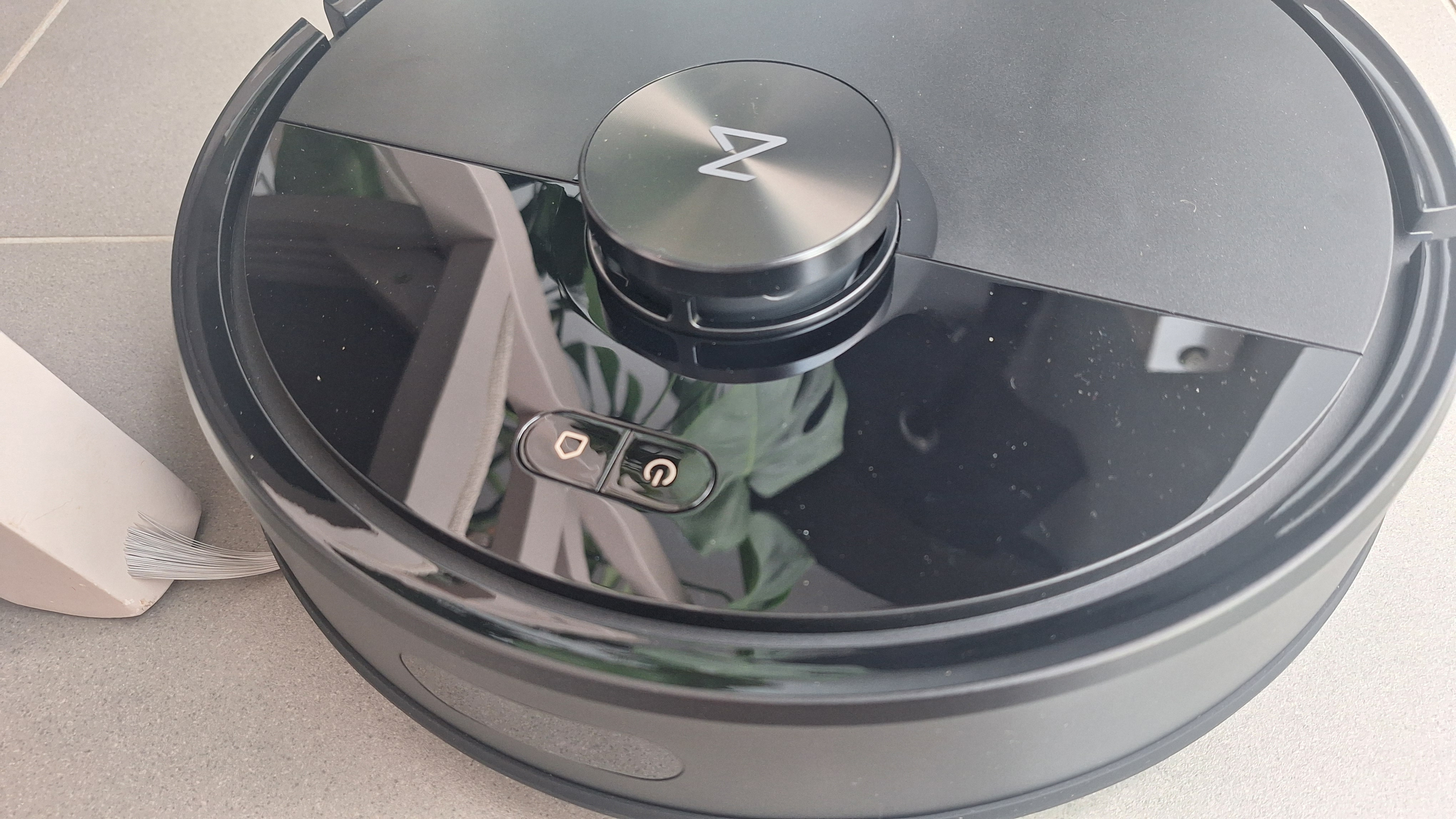
Flip the whole thing over and you’ll find the brushroll, which has a “JawScrapers comb” to prevent hair from tangling around it – although it didn’t prove very effective in practice. There’s also a rotating side brush to catch dirt from around the edges of rooms. On more advanced bots this will kick out to the side as required, but the version on the Q7 M5 is fixed. Roborock has placed the brushes at an angle, so hair slips off rather than becoming tangled – and from my experience, it seems to work quite well in practice.
The wheels are thick with a deep tread, and sit on a spring-loaded hinge, presumably to allow the robot to bounce its way over tall thresholds. Other bots have more hi-tech solutions for this – the Dreame X50 Ultra Complete has little extending feet, for example – but Roborock’s approach seems perfectly effective as a budget alternative.
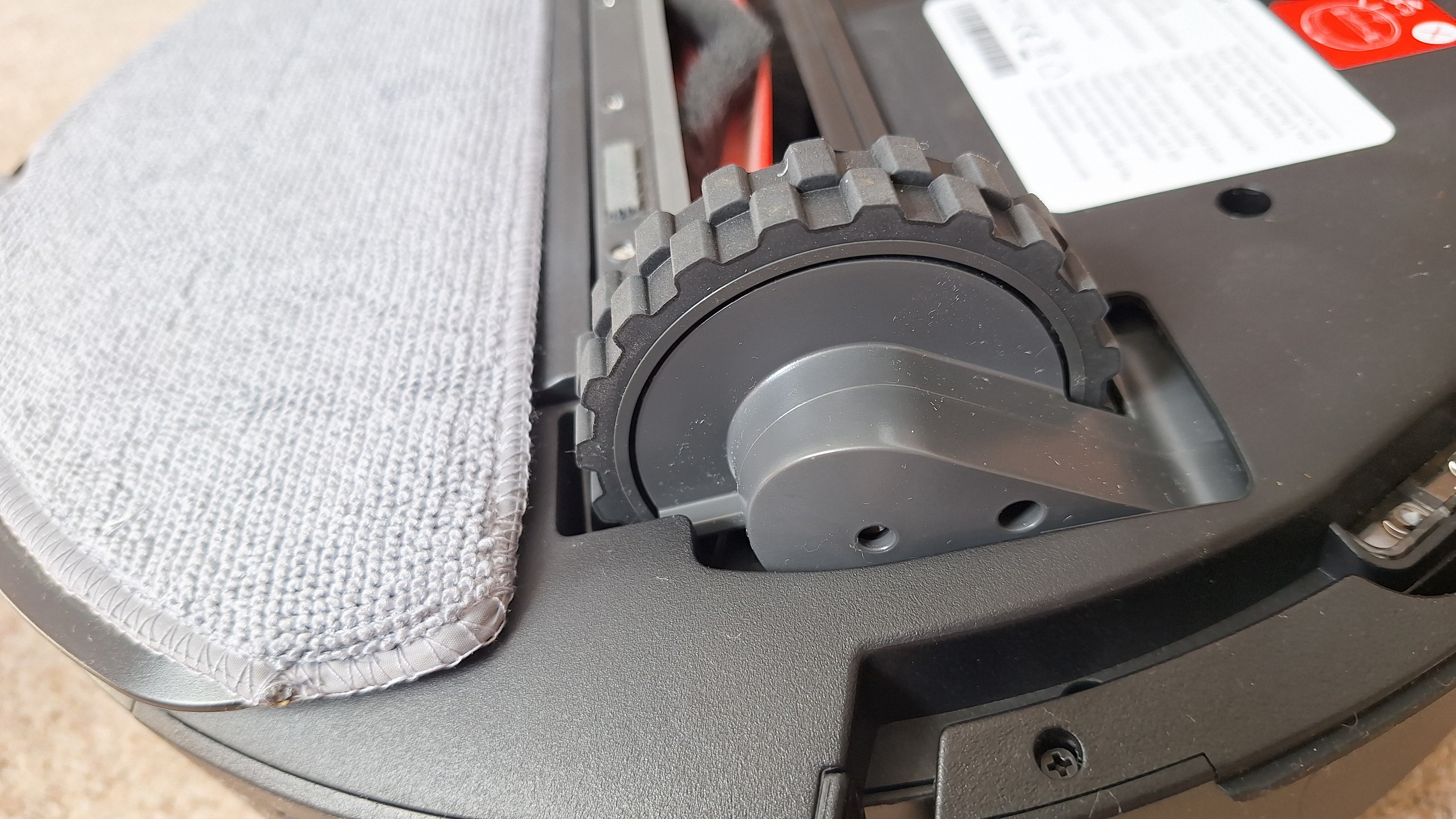
Slotted into the side of the bot is a unit that holds the dust cup and water tank. The mop pad itself is a fixed, D-shaped style pad, and it can be clipped on and off the main robot. It doesn’t feel enormously secure when clipped on, although it didn’t fall off at any point in my tests. The pad part can be removed and popped into the washing machine for cleaning.
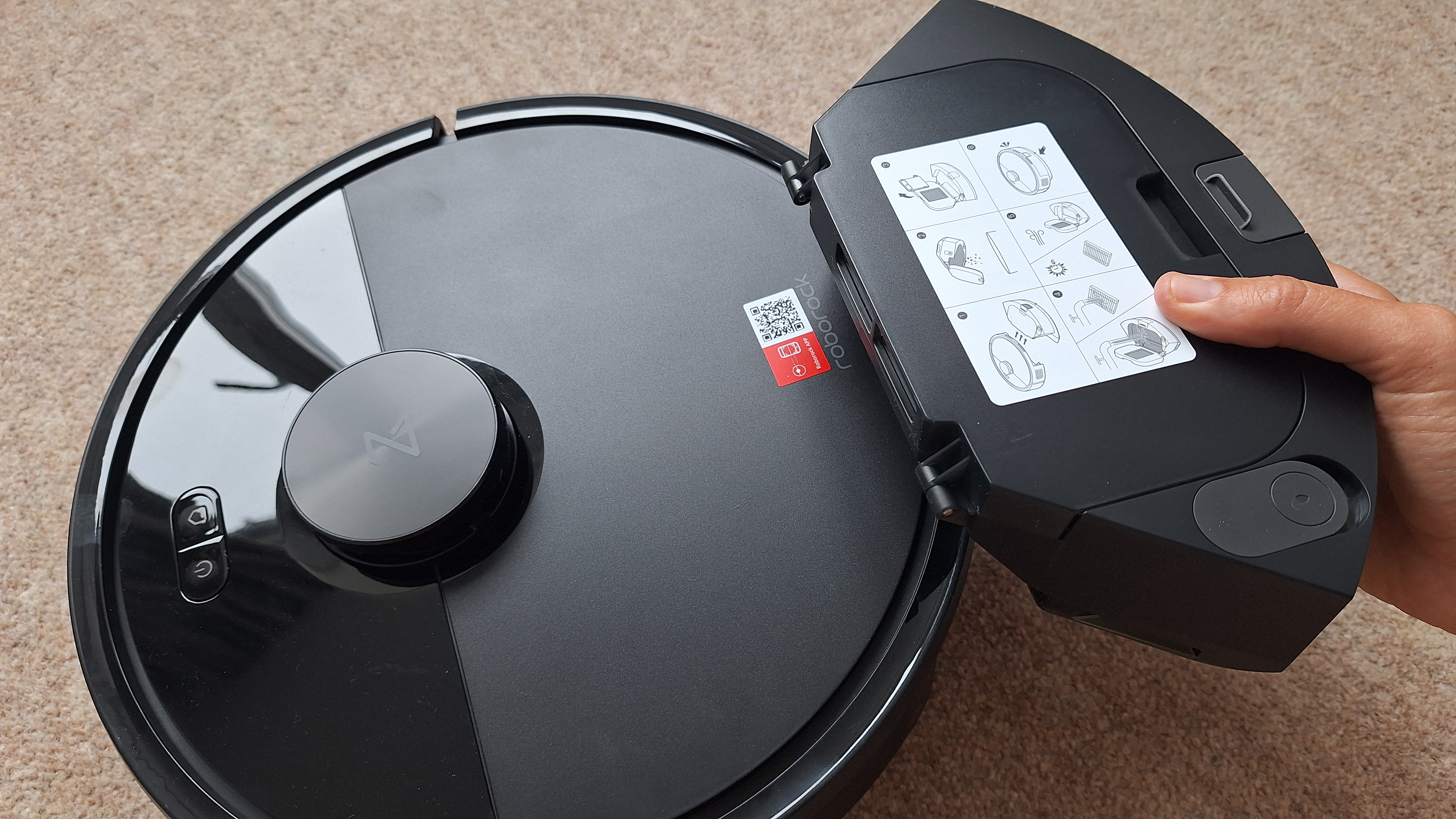
It’s a very basic style of mop in that the pad is simply dragged along the floor, wiping as it goes. Fancier bots have mops that press on the floor or vibrate to dislodge dirt, or have dual-rotating discs.
With some budget bots, the mopping is automatically “on”, whenever the mop pad is attached. That isn’t the case here: you can switch the water off from within the app. However, the Q7 M5 isn’t advanced enough to be able to lift up its mop pad when it encounters carpet, which means you might still end up with slightly damp carpets if the bot is making its way over them after a mopping session. (Some premium bots can even drop off their mop pads at their base station when they’re not needed.)
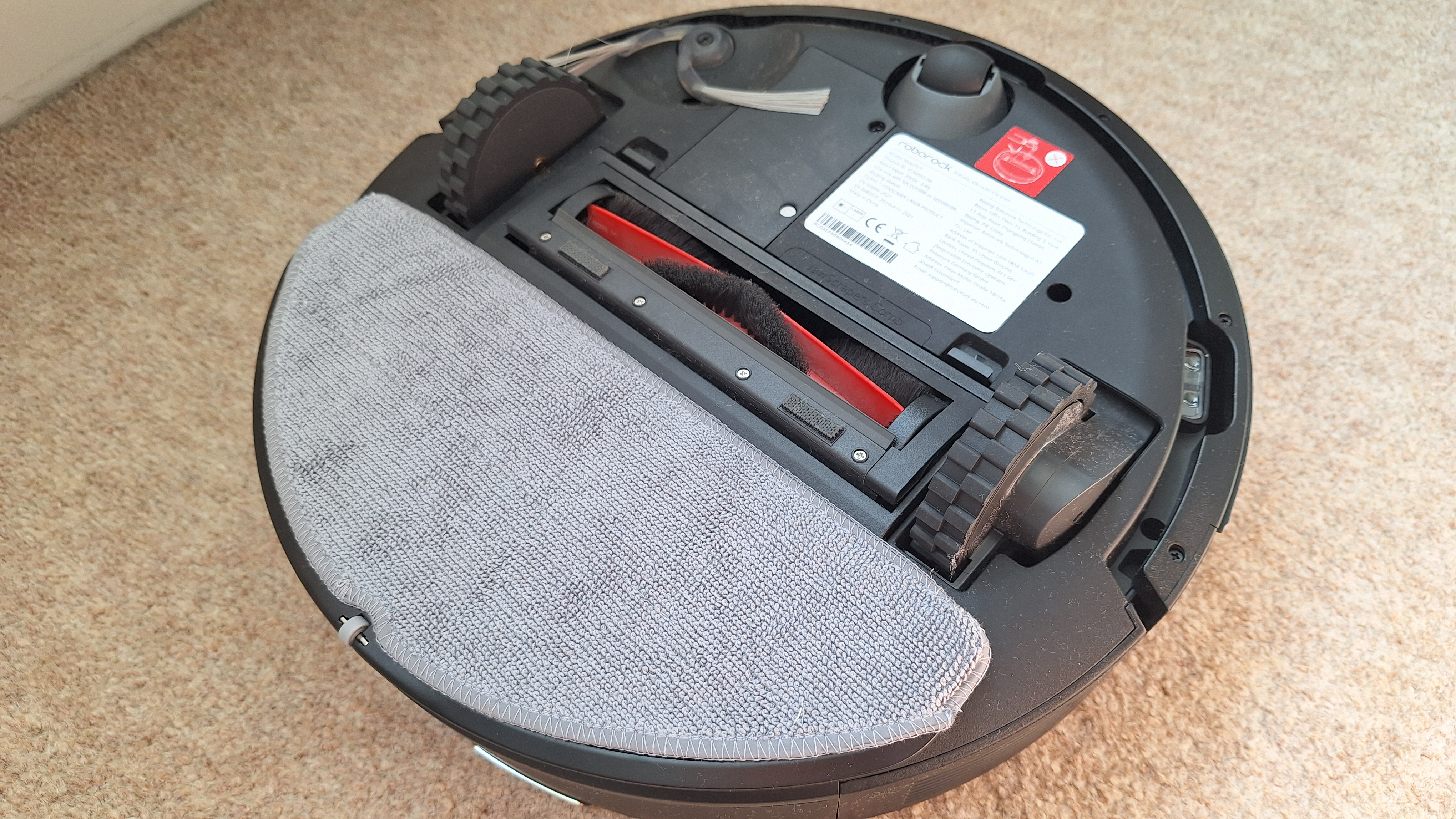
Speaking of the base station, the one included here is very basic and pleasingly compact. It simply charges the robot. In some territories there are sister models available with more advanced docks. If you’re dealing with larger amounts of dust, or have a pet, I’d definitely recommend opting for a version with an auto-empty dock.
- Design score: 3.5 out of 5
Roborock Q7 M5 review: performance
- Navigation accurate, but object avoidance is patchy
- Vacuuming is very good; mopping is fine but not amazing
- Sucks up hair (pet and human) well, but it does wrap around the roller
As ever with Roborock, mapping was smooth and navigation reliable. Initial setup simply involved sending it on its way on a “Quick mapping” run, where the bot scoots around – not cleaning, just looking – and builds a map of the space as it goes. On this run, it approached the edge of the top of the stairs repeatedly (and at speed), but stopped itself every time. Good cliff sensors should be a given for any robot vacuum, regardless of price, but I felt reassured nonetheless.
With the map compiled, I could name the rooms and make necessary adjustments. Note that some parts here were slightly buggy, but I’ll get into that in the App section.
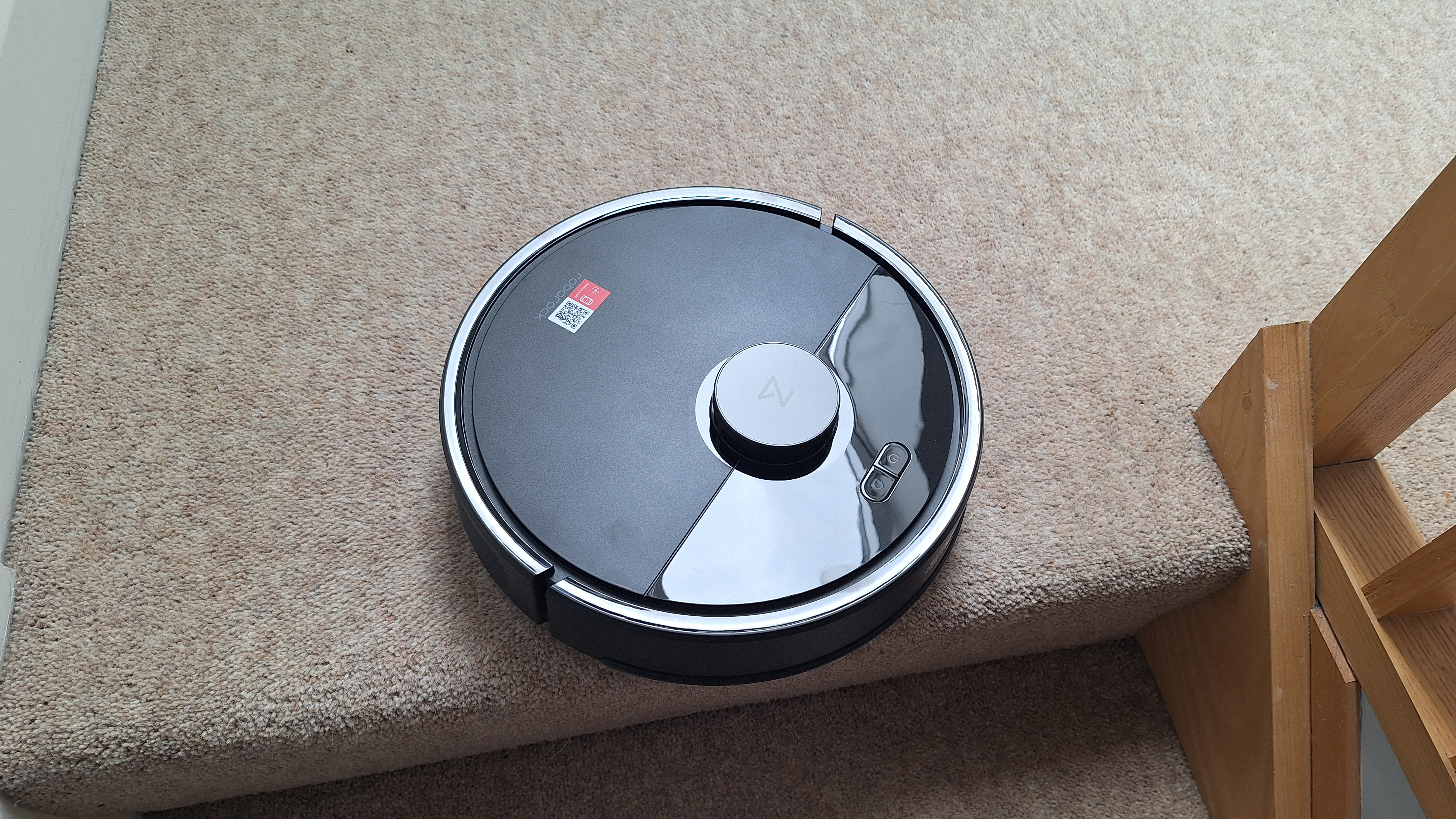
To kick things off, I sent the bot out on a whole-floor vacuum, just to get an initial feel for performance. There’s a maximum of 10,000Pa of suction here, which is decent, and more in line with what I’d expect from a mid-range robovac. Having checked the dustbin after the run, I could see it had done a stellar job of pulling dust and pet hair from the carpet – the latter of the two being particularly challenging. I’d rate its performance among the best robot vacuums for pet hair, if you’re on a budget.
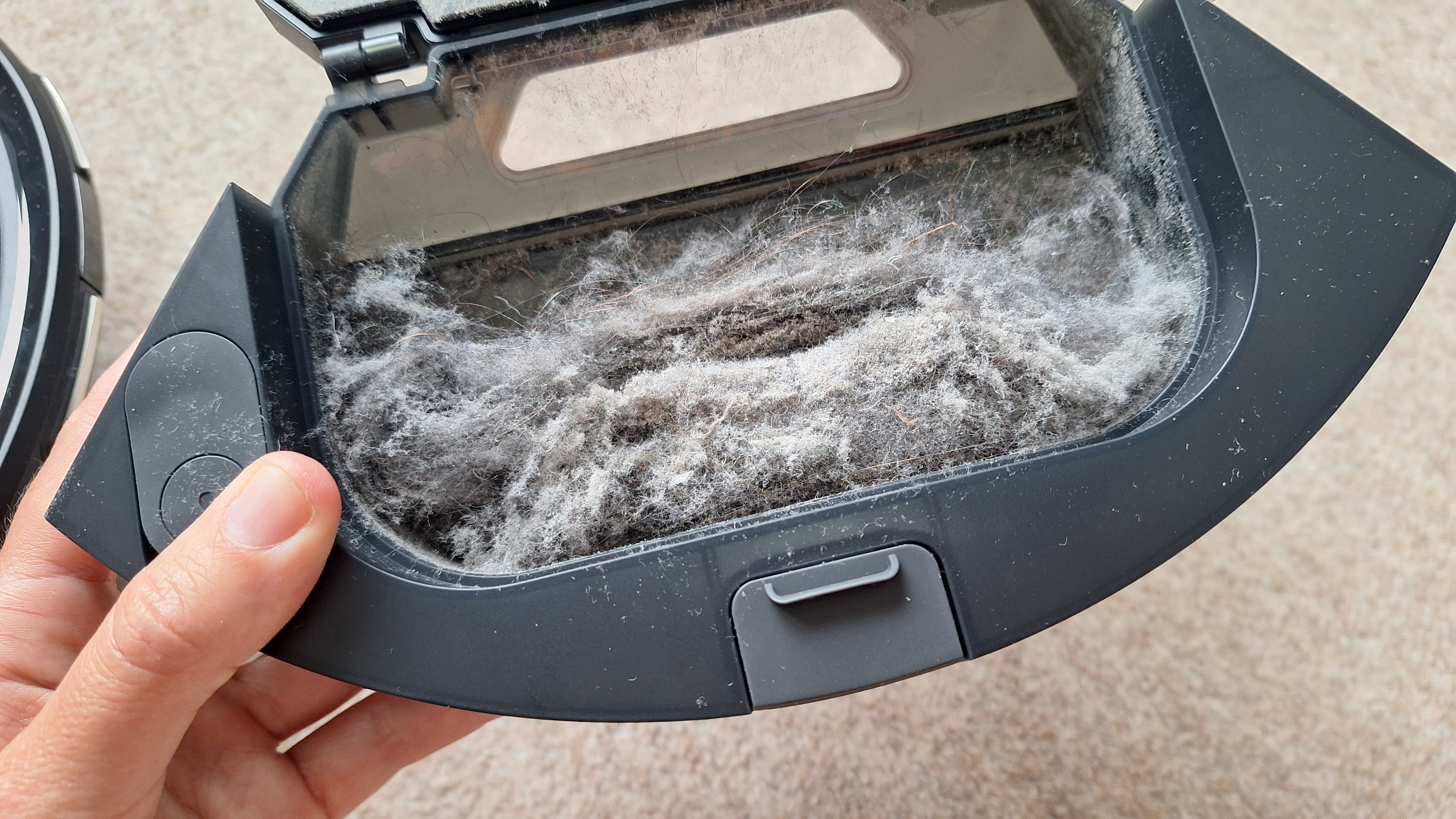
Then it was time for some more formal suction tests. For these, I scattered a teabag’s worth of dry tea leaves and a handful of oats onto the carpet, and performed a zone clean of the area. There are five suction modes to choose from: Quiet, Balance, Turbo, Max and MAX+ (I can’t help thinking Roborock has gone too hard, too soon, with the naming choices here).
A single pass in Turbo mode cleared most of the oats, but only the top layer of tea. Two more passes in MAX+ and the oats were history, and only a fine scattering of tea remained. That’s a super solid result – the tea is purposefully a very tricky test, and it’s rare for even expensive robovacs to clear it all.
Hard floors are far less challenging to vacuum, so I used the Balanced mode when repeating the test on the tiled bathroom floor. This time, almost all the oats were sucked up on a single pass, and the vast majority of the tea, too. The only real issue was with debris being pinged about; but, thankfully, the robot vacuum would catch any wayward remnants on a later run.
Moving on to the mopping tests. For this, I smeared a tiny amount of tomato ketchup on the tiled bathroom floor and left it to dry. I then set the bot on a mopping run to see if it could clear it.
There are three options for water level, or you can set the bot to mop and vacuum simultaneously (I prefer to vacuum first, then mop, to minimize the amount of gunk that ends up stuck to the damp mechanisms.)
Despite having a relatively basic mopping setup, the Q7 M5 actually did a pretty good job here. One pass in medium wetness mode was enough for the robovac to begin to lift the smear, and a couple more in max mode saw only a tiny bit remaining.
This is one of the wetter mopping mechanisms I’ve used, so it wouldn’t be a great choice if you wanted something for hard floor that can only stand a little bit of water. Beware, too, that the mop pad doesn’t lift, so if the route back from your hard floor to your dock is carpeted, said carpet will end up a bit damp. Overall, the mopping is fine here, but if that’s your priority then there are better choices out there.

Like most robot vacuums, the Roborock Q7 M5 has a spinning side brush designed to flick debris from the edges of rooms into the path of the suction. Here, it worked fairly well but not amazingly – perhaps because it’s fixed rather than being able to extend. The bot shifted some of the tea sprinkled along the edge of the bathroom floor, but left more behind.
Roborock says this bot has anti-hair wrap features built into the brushroll. However, on test I found my long hair tangled around the roller. However, the anti-tangle design of the side brush was more effective on this front.
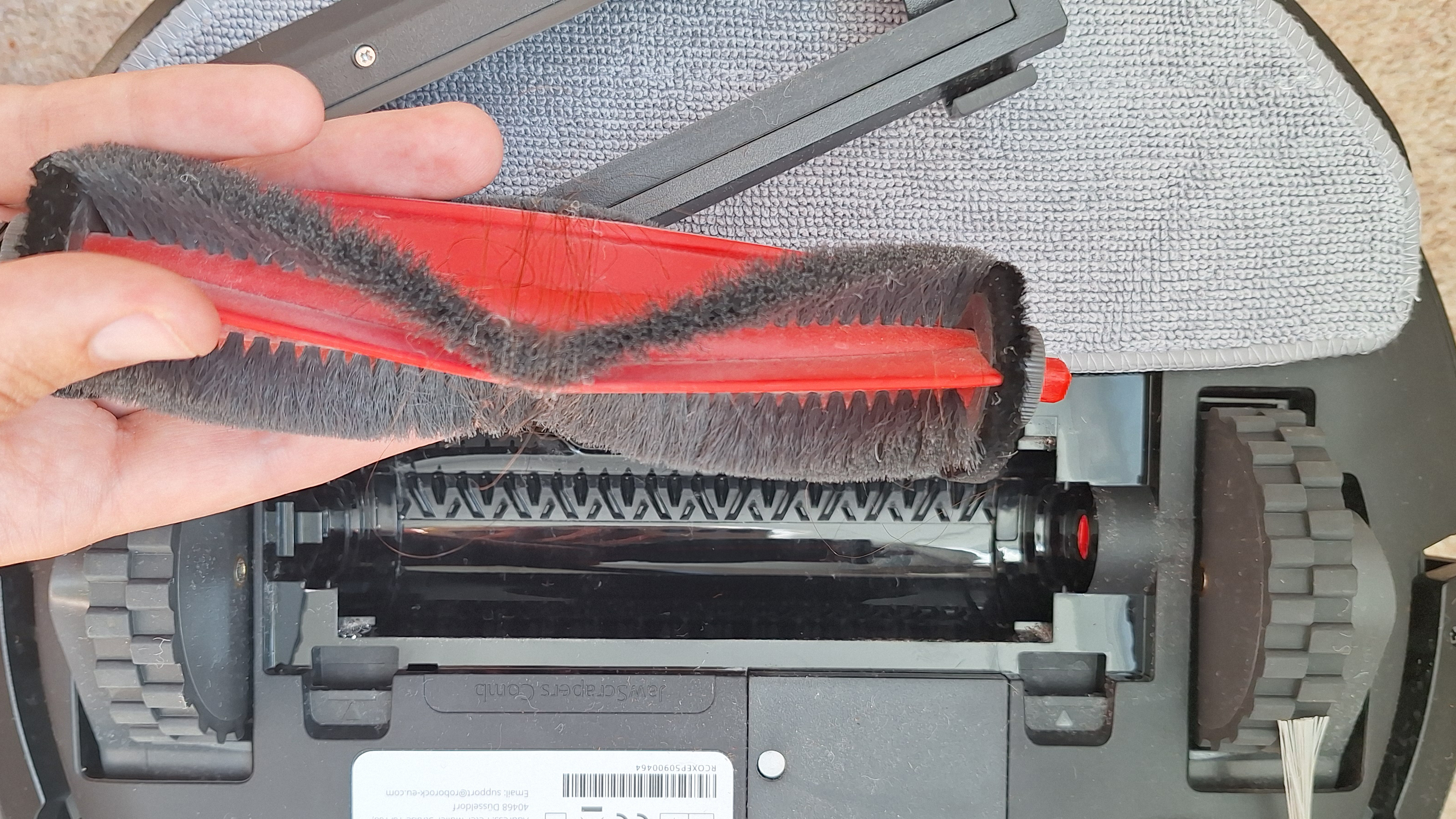
Finally, I ran some object avoidance tests. These involved laying out a series of objects – charge cable, socks, dog bowl – on the floor and seeing if the bot would avoid them. Unfortunately, it confidently ploughed into everything I put in front of it, so a bit of a fail on this front. (One useful hack is to activate a “Pet” mode to increase sensitivity to objects, but there was no such option I could find here.
That said, in my real-life tests the bot performed much better. For instance, it skirted the perimeters of chair legs and the base of the toilet cistern, for example, rather than bumping into them. Nevertheless, I still wouldn’t recommend this bot to those who have a lot of clutter in their homes.
- Performance score: 4 out of 5
Roborock Q7 M5 review: app
- Encountered a few bugs that I assume will be fixed
- Otherwise well-designed and intuitive
I’ve used plenty of Roborock robot vacuums and the app has always been great. So I was surprised that things weren’t entirely smooth when testing it with the Q7 M5. While there weren’t any glaring issues, I did run into several glitches: I was unable to resize a zone properly; the app would forget room names; plus it failed to save a customized cleaning routine, for example.
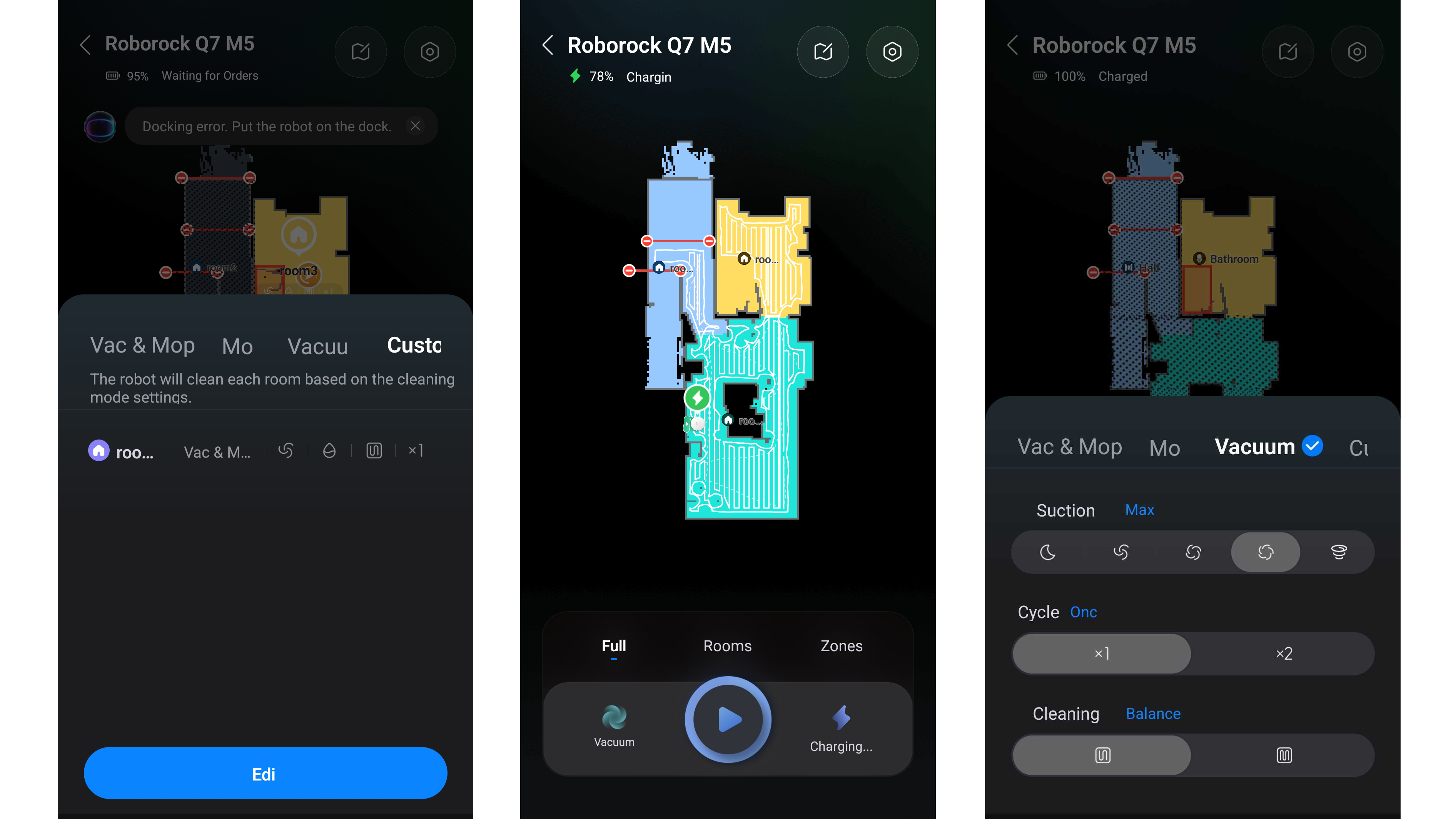
There was also a strange bug where the text wasn’t resizing properly, so the ends of words would routinely be cut off – do you want to “Mo” or “Vacuu”? I assume most of these are temporary glitches and should be fixed before long.
Otherwise, it’s the same well-designed app I’m used to. It’s pretty intuitive, well-laid out and easy to figure out from scratch.
Should you buy the Roborock Q7 M5?
|
Attribute |
Notes |
Rating |
|---|---|---|
|
Value |
Budget price bracket and deals are common. Not the most advanced, but performance is good for the price. |
4 / 5 |
|
Design |
Robust-looking robot with strong suction specs, raised LiDAR tower, bouncy wheels and a basic mop mechanism. Simple but solid design, lacking the advancements of pricier Roborock bots. |
3.5 / 5 |
|
Performance |
Accurate navigation and very good vacuuming, but mopping is a little wet and object avoidance patchy. |
4 / 5 |
|
App |
Unusually glitchy, but otherwise well designed and intuitive. |
3.5 / 5 |
Buy it if…
Don’t buy it if…
How I tested the Roborock Q7 M5 robot vacuum
I used the Q7 M5 as my main robot vacuum for a week, stationing it on a higher level of my house, which includes a carpeted hall and master bedroom (where a hairy spaniel also sleeps) and a tiled en-suite bathroom. As well as getting a feel for how well it performed in general, I ran specific mopping and vacuuming tests, which included sucking up oats and/or dry tea, and using the mop to clear a smear of dried ketchup off a tiled floor. I also tested obstacle avoidance by laying out common objects to see if the bot would spot and avoid them. I compared the performance, general usability and value for money to other robot vacuums I’ve tested in the past.
Read more about how we test robot vacuum cleaners

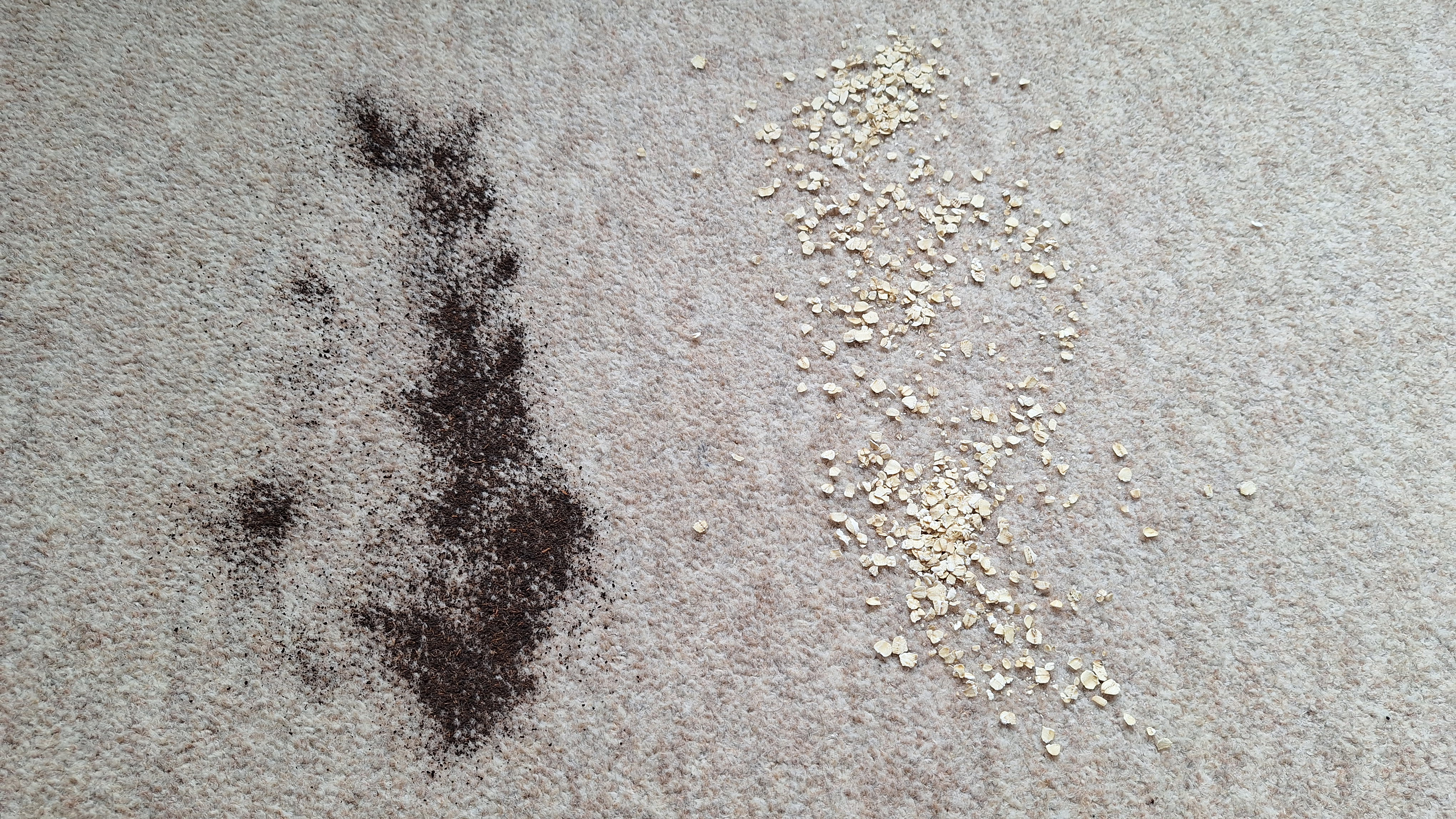


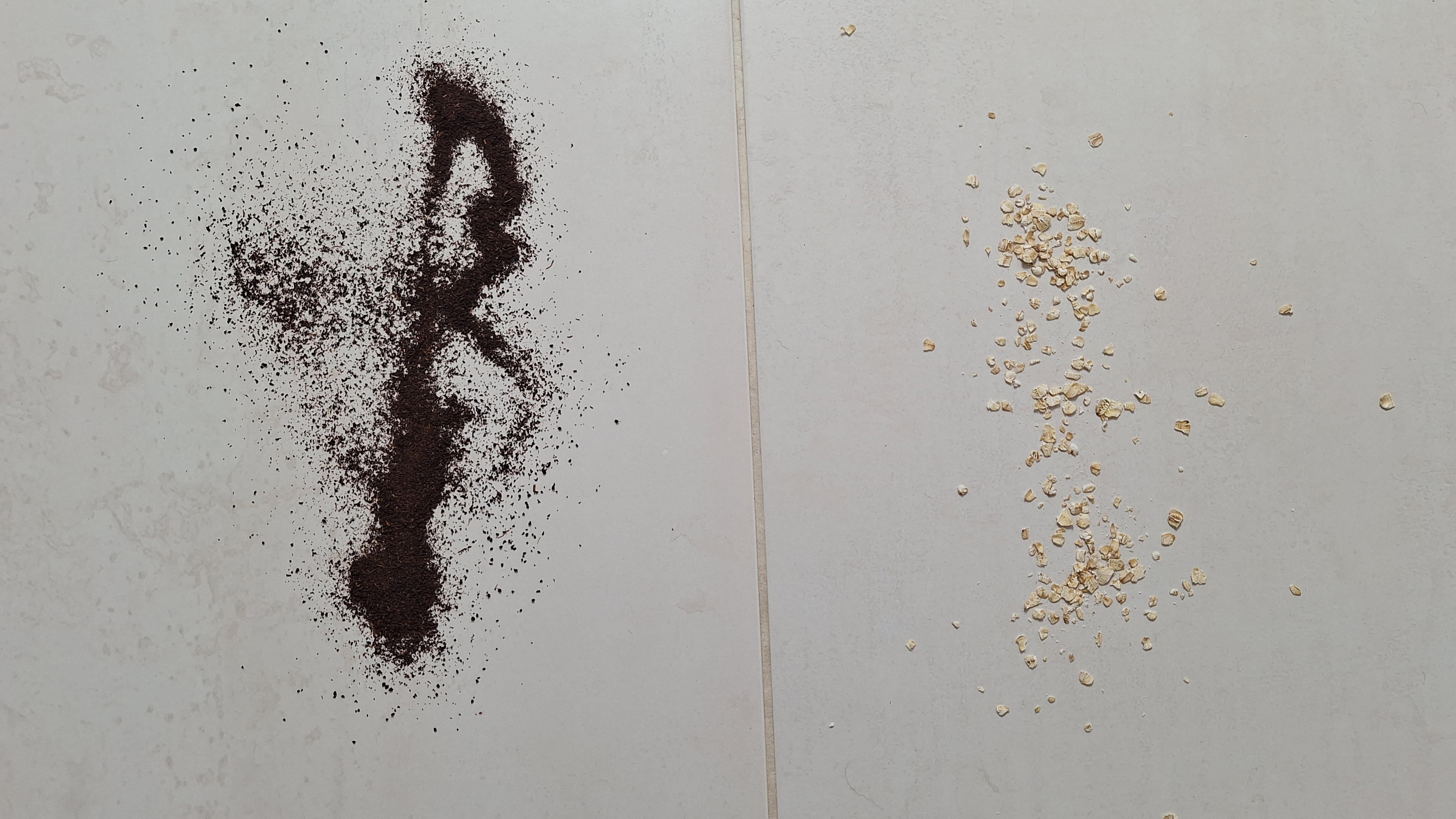





%20Your%20Robot%20Vacuum.png?w=1920&resize=1920,998&ssl=1)



